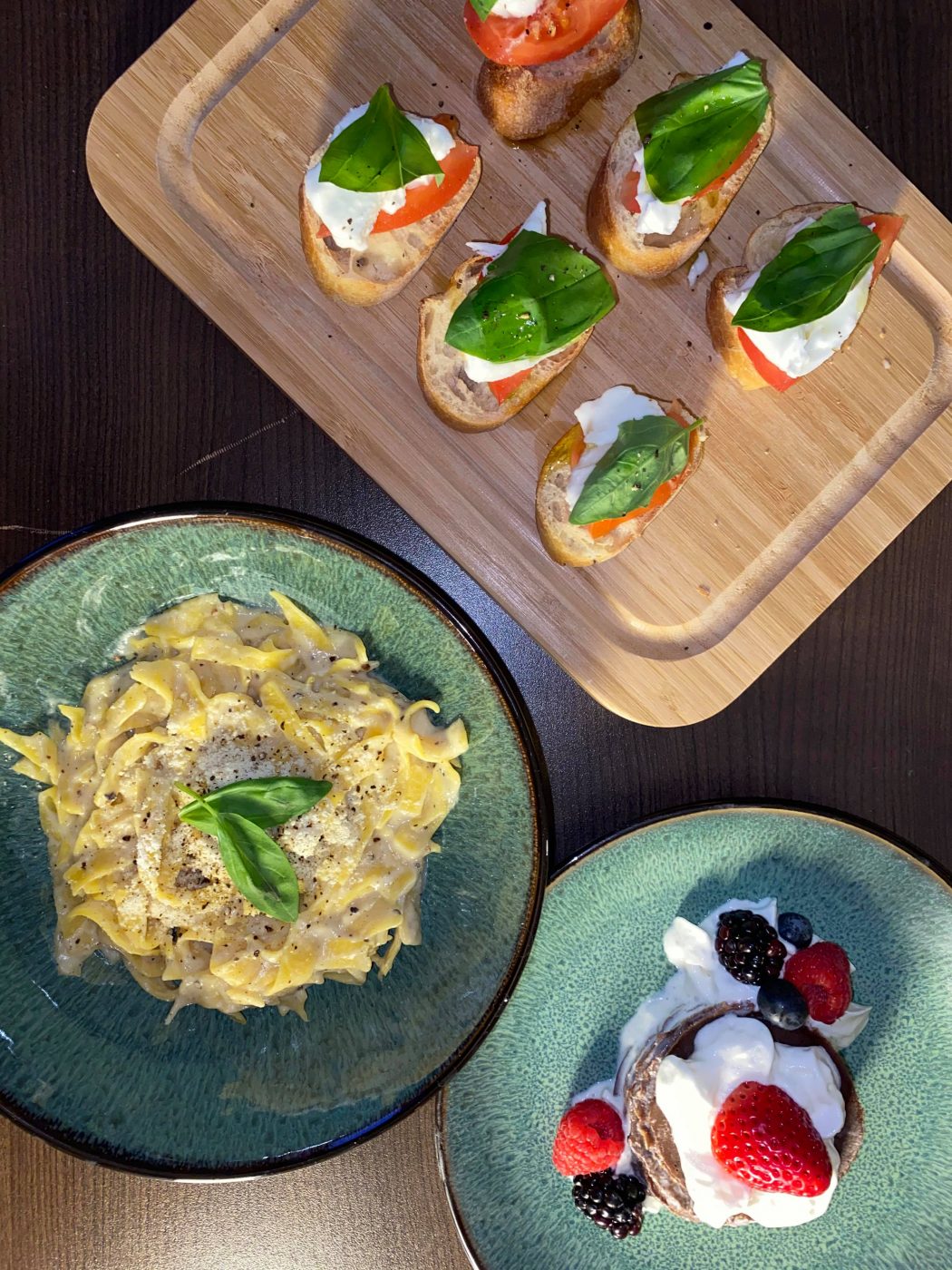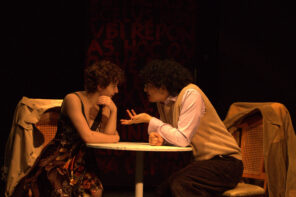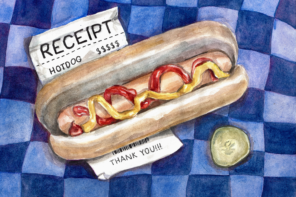Cooking has long been one of my favorite pastimes, always serving as both a comfort and distraction whenever I need a break from the chaos that is life. Growing up, I remember sitting at the counter every evening, watching my dad cook some brilliant meal, which almost always ended up being delicious. My dad studied chemistry throughout his years in university, and I firmly believe his background as a chemist has shaped him into a better cook. He would constantly experiment with different recipes and foods, tossing together ingredients that I never would have imagined could taste so good.
As for myself at present, while I indeed inherited my dad’s love for cooking, I certainly do not possess the same natural talent. Let’s face it, without a recipe to follow, I’m lost! Despite this, I always find myself drawn towards the kitchen and to trying new foods. As a first year McGill student living in residence during the pandemic, there’s only one obstacle standing in my way from fulfilling my ultimate cooking dreams: I don’t have access to a proper kitchen!
I came up with a menu that was both gourmet and appropriate for a student.
As the year has gone on, I knew I needed to figure out some solution. And then it hit me! The perfect way for my cooking dreams to come true was to create the ultimate experiment. I was going to try to cook a three-course meal exclusively using the heat sources I already had in my dorm room: a clothing iron and a kettle.
Aside from the heat sources in my room, I had access to…
- 2 very cheap metal bowls from Uniprix
- Cutlery and some dishes I had brought from home
- A cheap cutting board (also from Uniprix)
- Tin foil
Of course, deciding what to actually make was my next challenge. While I was initially quite ambitious, I quickly learned that tiramisu is, unfortunately, quite difficult to make in a dorm room and a tad too expensive for a broke university student. Eventually though, I came up with a menu that was both gourmet and appropriate for a student: bruschetta for the appetizer, cacio e pepe for the entree, and a mille crêpe cake for dessert.
Aperitif: Bruschetta
I started this challenge off with the easiest part: making bruschetta — one of my all time favorite foods that doesn’t require too much effort.
To make it, here’s what I used:
- The cheapest baguette I could find (not very gourmet, but what can you do?)
- 1 Tomato
- Buffalo Mozzarella (yes, it’s a little more expensive than just regular mozzarella, but it’s worth it!)
- Fresh basil
- Olive oil (optional, but a nice addition)
The only tricky part with the bruschetta was toasting the bread. I ended up balancing my iron against my kettle to get it to stand upright so I could cook on a flat surface. Then, I put some tin foil on the iron, heated it up, and placed the bread on there for a couple minutes. Once slightly toasted, I added the tomato, cheese, and basil and then drizzled the olive oil on top.
Overall, I would give this dish a 10/10. It was delicious and super easy to make, even with my limited supplies.
Primi: Cacio e Pepe
Next, I prepared my entrée: cacio e pepe. One of simplest and most delicious Italian pasta dishes—my confidence was high. A little too high…
To make it, here’s what I used:
- Fettuccine pasta (tonnarelli or bucatini are more traditional, but take longer to cook)
- Black pepper
- Grated parmesan cheese (pecorino is more traditional, but I couldn’t find any pre-grated!)
- Basil (optional, for garnish)
For this recipe, I originally wanted to use freshly made pasta, but I could’t find any at my local grocery store, and I didn’t have time to go on a big search. I ended up finding dried fettuccine pasta with instructions that said that the noodles would only need about 4 minutes to cook. What could go wrong, right?
To prepare, I boiled water in my kettle and then poured it on top of the pasta in a bowl, covering it for a minute before straining and then adding more boiling water. This technique did not work out the best… The pasta was quite al dente and had a strangely sweet taste. (That’s right, sweet!) At this point, I was pretty tired, so I just went with it. Once the pasta was “cooked,” I heated up my iron again and added one of my metal bowls on top. I added the black pepper to the bowl and toasted it over the heat for a minute. Then, I added the pasta and a bit of leftover pasta water and mixed.
After mixing, I added the cheese until I got the sauce consistency I wanted; I ended up adding some of the butter that I used for the crêpes later on to thicken the sauce up a bit. Once all combined, I transferred it to another dish and garnished with extra cheese, pepper, and basil. The sauce came out well, but the strange taste from the pasta was overpowering. Due to the lack of a proper heat source, I think the sauce wasn’t able to properly emulsify.
Overall, I have to give this dormroom cacio e pepe a 2/10.
Dolce: Mille Crêpe Cake
The final item I endeavoured to make was a mini mille crêpe cake, consisting of multiple layers of chocolate crêpes and whipped cream. To my pleasant surprise, this ended up being way less difficult than I thought it would be.
To make it, here’s what I used:
- 1 package of Leader Price crêpe mix
- Cocoa powder
- Oat milk (any form of milk will work)
- Butter
- Whipped cream
- Fresh fruit to garnish
Originally, I wanted to make everything from scratch, but soon I realized that doing so would require getting a lot of individual ingredients that would sit in my mini-fridge, unused, for the rest of the semester. So, I opted for a premade crêpe mix and whipped cream to save both time and money. I ended up eye-balling all the ingredients, and it worked out surprisingly well. Mixing the crêpe mix, cocoa powder, and almond milk was the easy part though; figuring out how to actually cook the crêpes was a bit more difficult.
Sadly, I soon came to realize that store-bought whipped cream is not a sturdy structural material, and my crêpe cake collapsed while cooling.
Using my iron as the heat source, I propped it up against my kettle so it could stand upright. Next, I placed one of the bowls I had on top of the heated iron and added some butter. The bowl that I used had a perfectly shaped indent at the bottom that I used to make the crêpes. Here’s a picture of how I set it up:
Once I finished making ten crêpes, I put them aside to cool in my fridge. Once cooled, I stacked them up, alternating layers of crêpe and whipped cream, and then I put the cake back in the fridge. Sadly, I soon came to realize that store-bought whipped cream is not a sturdy structural material, and my crêpe cake collapsed while cooling. Despite this setback, it was still delicious, and once I added some extra dollops of whipped cream and fruit to hide the destruction underneath, I think it came out looking pretty good.
Overall, I would give the mille crêpe cake a 6/10.
*
This was definitely a crazy cooking experiment! It ended up proving to be way more of a challenge than I originally expected, but it was a nice change of pace from the same old dining hall offerings. Overall, I’d have to say these are my main takeaways from this experience: 1) crêpes are surprisingly easy to make with an iron, 2) pasta is VERY difficult to boil in a dorm room, and 3) bruschetta is always delicious!
Buon appetito!








